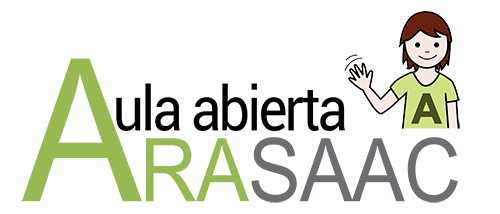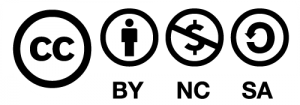From ARASAAC we’d like to thank both Carmen Basiland the Unitat de Tècniques Augmentatives de Comunicació (UTAC) for their collaboration at drafting this section in our website.
What are the Augmentative and Alternative Systems of Communication?
 The Augmentative and Alternative Systems of Communication (AAC)are ways of expression different from spoken language, that aim at increasing (augmentative) and/or compensate (alternative) the difficulties of communication and language of many people with disabilities.
The Augmentative and Alternative Systems of Communication (AAC)are ways of expression different from spoken language, that aim at increasing (augmentative) and/or compensate (alternative) the difficulties of communication and language of many people with disabilities.
Communication and language are essential for every human being to interact with other people, to learn, enjoy and take part in society. Today, thanks to these systems, they can’t be restrained by the difficulties with the oral language. For this reason, every person, whether kids, teenagers, adults or seniors, that for any cause haven’t acquired or have lost the level of spoken language needed for communicating in a satisfactory manner, have to use an AAC.
Among the reasons to make the use of an AAC necessary, we find cerebral palsy (CP), intellectual disability, autism spectrum disorders (ASD), neurological diseases such as amyotrophic lateral sclerosis (ALS), multiple sclerosis (MS) or Parkinson’s disease, muscular dystrophies, traumatic brain injuries, aphasias or multiple disabilities of different types, to name but a few.
Augmentative and Alternative Systems of Communication (AAC) is not incompatible but complementary to the rehab of natural speech. Besides, it may help to its success whenever it is posible. Thus, you shouldn’t hesitate to introduce it at early ages, as soon as you observe difficulties in the development of oral language, or soon after any accident or disease has caused its damage. There is no evidence that the use of AAC inhibits or interferes in the development or recovery of speech.
What resources are used?
Augmentative and Alternative Communication includes different systems of symbols, both graphic (pictures, drawings, pictograms, words or letters) and gestural (mimicry, gestures or hand signals) and, in the former case, it also requires the use of support products. The different systems of symbols adapt to the needs of people of varied ages and uneven motor, cognitive and linguistic skills.
The support products for communication include technological resources such as artificial speech communicators, personal computers or tablets with special programmes that allow different forms of access adapted for people with very limited mobility. They also facilitate the incorporation of the different systems of pictographic and ortographic symbols, as well as different outbound means including voice output. They may also involve non technological resources like communication boards and books.
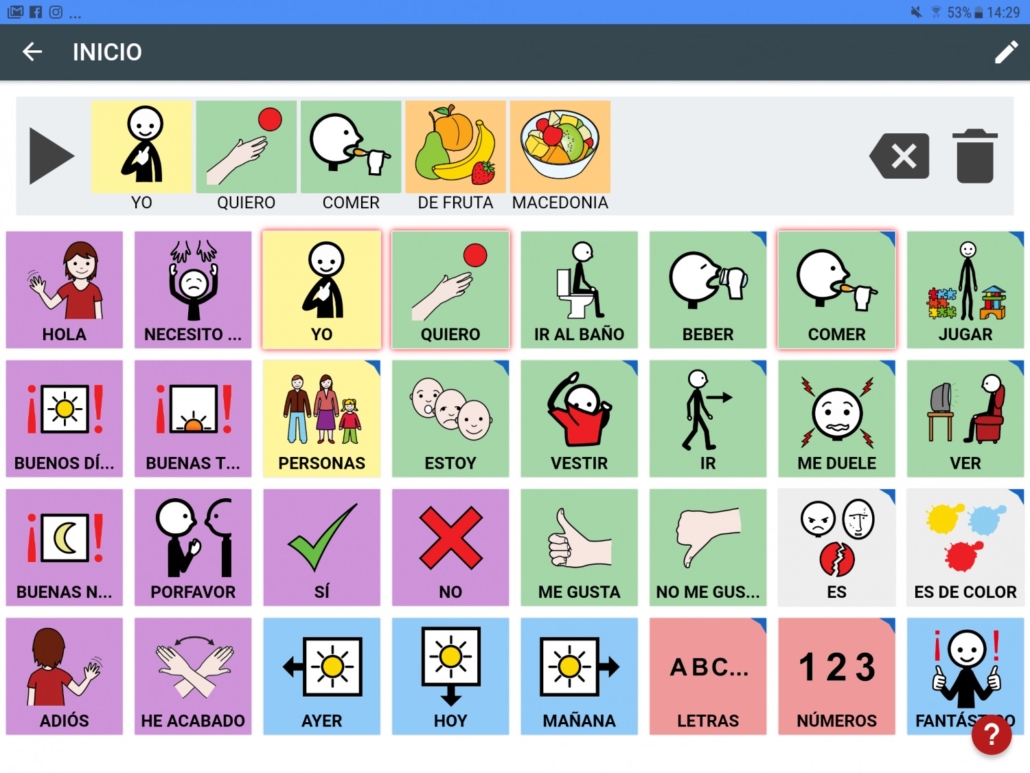
There are different strategies and instruments to access computers, communicators, communication boards or books, generically called strategies and products of support for access, such as pointers, adapted or virtual keyboards and mouse devices or switches.
Systems of symbols
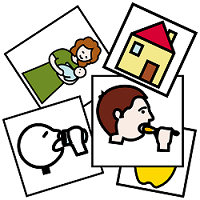 Previously we have divided the systems of symbols for ACC into gestural and graphic. In both cases we find a gradation from very simple systems -that adapt themselves to people with cognitive and linguistic deficit of different considerations- to complex systems that allow advanced levels of sign language (based on hand signs) or assisted language (based on graphic signs).
Previously we have divided the systems of symbols for ACC into gestural and graphic. In both cases we find a gradation from very simple systems -that adapt themselves to people with cognitive and linguistic deficit of different considerations- to complex systems that allow advanced levels of sign language (based on hand signs) or assisted language (based on graphic signs).
In the case of gestural symbols, this gradation encompasses from the use of mimicry and commonly used gestures to the use of hand signs, generally in the order of spoken language; this is what is called signed or bimodal language. Sign languages used by hearing impaired people are not considered as AAC as they constitute languages that have been naturally developed and acquired, like spoken language. The use of hand signs requires having enough motor skills as it may be the case of people with mental disability or autism spectrum disorders.
Graphic symbols cover from very simple systems based on pictures or photographs to systems more and more complex like pictographic systems or traditional orthography (letters, words and sentences). used by motorically impaired people (CP, ALS, MS…). Thanks to the support products for communication and the diverse resources for access, the graphic systems may be used by people with reduced mobility, even in cases of extreme severity. That’s why, apart from being used, in the previous case, by mentally disabled people or those with ASD, they are also
Pictographic systems are applied to people who are illiterate because of age or disability. They offer the advantage of allowing, from a very basic level of communication -that is adaptable for people with low cognitive levels or at very early stages- to a very rich and advanced level- although never as complete and flexible as the one that can be reached with the use of written language. The most widely used pictographic systems in Spain are PSC (Pictographic System of Communication) and ARASAAC, developed by this Aragonese Portal of AAC and freely available under Creative Commons licence.
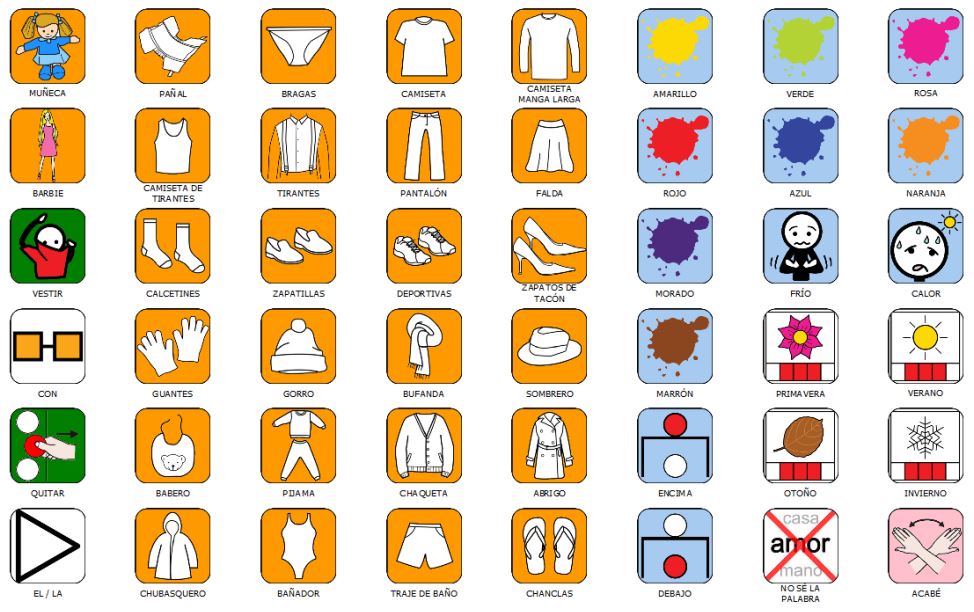
Support products for communication
We can divide support products for communication into basic and technological. The boards of communication are basic support products that consist of surfaces of diverse materials where graphic symbols for communication are placed (photographs, pictograms, letters, words and/or sentences) that the person will indicate to communicate. When the sysmbols are distributed on different pages, we call them communication books.
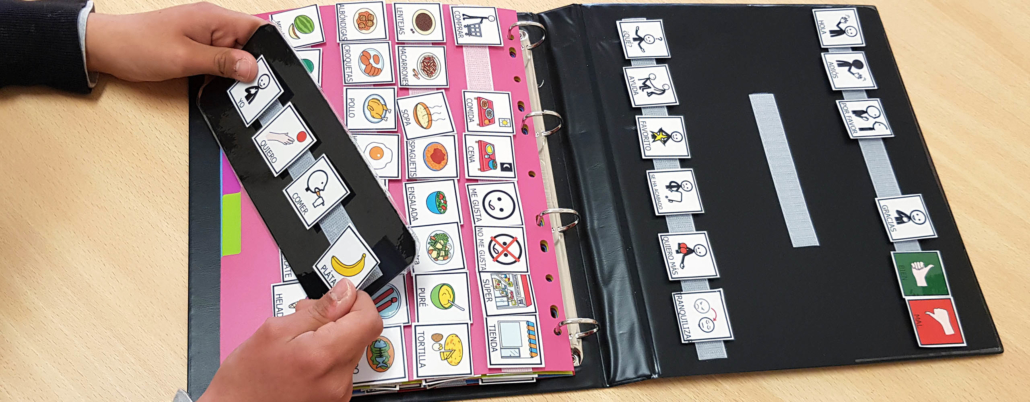
Among the technological products we find electronic communicators especially designed for that purpose, and personal computers or tablets with special programmes that turn them into communicators. The electronic communicators emulated by computers are customized with the graphic symbols each person requires. They are characterized by being portable and adaptable to the access forms appropriate for each person (keyboard, mouse, switches…). They have digitalized or synthesized voice output for messages , as well as they usually offer other outputs like screen, printed paper or even control of the environment functions. For instance, on the website www.utac.cat you can find different versions of an organized pictographic vocabulary (CACE-UTAC), made with a range of communication programs and ready to be directly used on personal computers (that in this way turn into communicators) or printed to create communication books.
The versions for Plaphoons with ARASAAC pictograms in Spanish and Catalan are freely accessible. The rest of versions are also access free but they require having the corresponding programs and/or systems of commercial symbols.
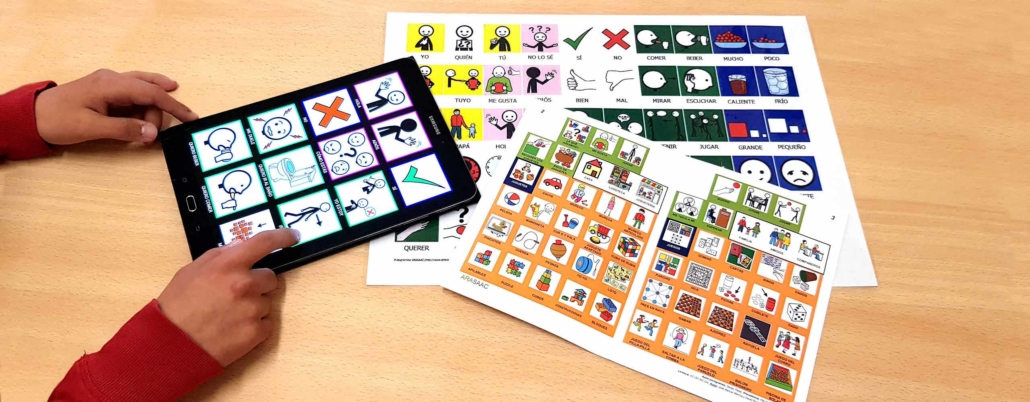
The strategies and support products for access
To indicate the graphic symbols on communicators, communication boards and books, there exist these five basic strategies:
- Direct selection: the user points at or presses the buttons directly with the finger, the sight or other parts of the body in order to indicate the pictograms, words or letters he/she wants to communicate. The pointers of different types are examples of support products that can facilitate the selection or direct access.
- Mouse selection: it is only for electronic products. It consists in using the mouse to access keyboards or grids with symbols to communicate through the screen. You can use a wide variety of adapted mouse devices like joysticks, trackballs, facial mouse devices (controlled by head movements), mouse devices controlled with the sight or the multimouse, which consists of five keys or switches.
- Dependent exploration or scanning: just for boards or books. The interlocutor points at the symbols or letters to be communicated one by one, by groups, rows or columns, until the assisted speaker indicates with a gesture that the letter/word has been identified.
- Independent exploration or scanning: just for electronic products. In this case it is the communicator or the computer that shows the different options to be communicated until the assisted speaker chooses the one he/she wants by pressing a switch. There are many types of switches that can be activated with different parts of the body.
- Coded selection: each symbol or letter has a code (for instance a number of two or three digits or a colour and a number) so that the assisted speaker indicates this code by direct selection or scanning to transmit the symbol or letter. In this way, with a few keys or grids he/she can access a great number of symbols.
Thanks to the different strategies and support products for access, even if the mobility of a person is highly limited, it is possible to find a solution so that he/she can access communication and other activities such as mobility assistance, environment control or computer access for writing, drawing, playing or communicating on the web.
How can we encourage the success of the intervention with AAC?
The support systems and products for AAC are just a medium or a necessary condition for the person with speech disability to be able to communicate, to develop his/her abilities and to participate in the world that surrounds him/her. But these are never enough. What is really important is the process of education, empowerment and assessment that should accompany them.
The intervention process has to begin with an evaluation of the capacities, abilities, necessities and wishes of the person, as well as the features, supports, requirements and restrictions of his/her environment in order to define the components the most adequate system or systems are going to have. You will have to thoughtfully choose the support products as well as the access strategies and, for those AAC users who can’t read, you will have to select the signed or pictographic vocabulary you will be teaching. This evaluation process doesn’t have to be occasional but continuous throughout life.
The empowerment and teaching should be addressed both to the person and to his/her environment, including all the contexts where he/she participates or wants to take part in, as well as all the meaningful persons in these contexts, comprising professionals and, above all, family members, colleagues and friends. This instruction has to be delivered in educational and therapeutic environments but also in natural contexts, as a 24 hours approach that guarantees that the person will be immersed in a good language environment, surrounded by sensitive and competent interlocutors, and involved in interesting and enriching activities.
To encourage the success of the intervention with AAC, the most important thing is to achieve that the disabled person has interesting things to communicate, knows how to do it and has interlocutors willing to listen to and able to understand him/her. This objective shouldn’t be left to chance. Instead, it has to be reached through effort and the merits of competent professionals, supported by a society more and more aware of this and free of prejudices.
(1) Carmen Basil
UTAC-Sírius: Unitat de Tècniques Augmentatives de Comunicació (www.utac.cat)
Departament de Benestar Social i Família de la Generalitat de Catalunya
Departament de Psicologia Evolutiva i de l’Educació, Facultat de Psicologia, Universitat de Barcelona






